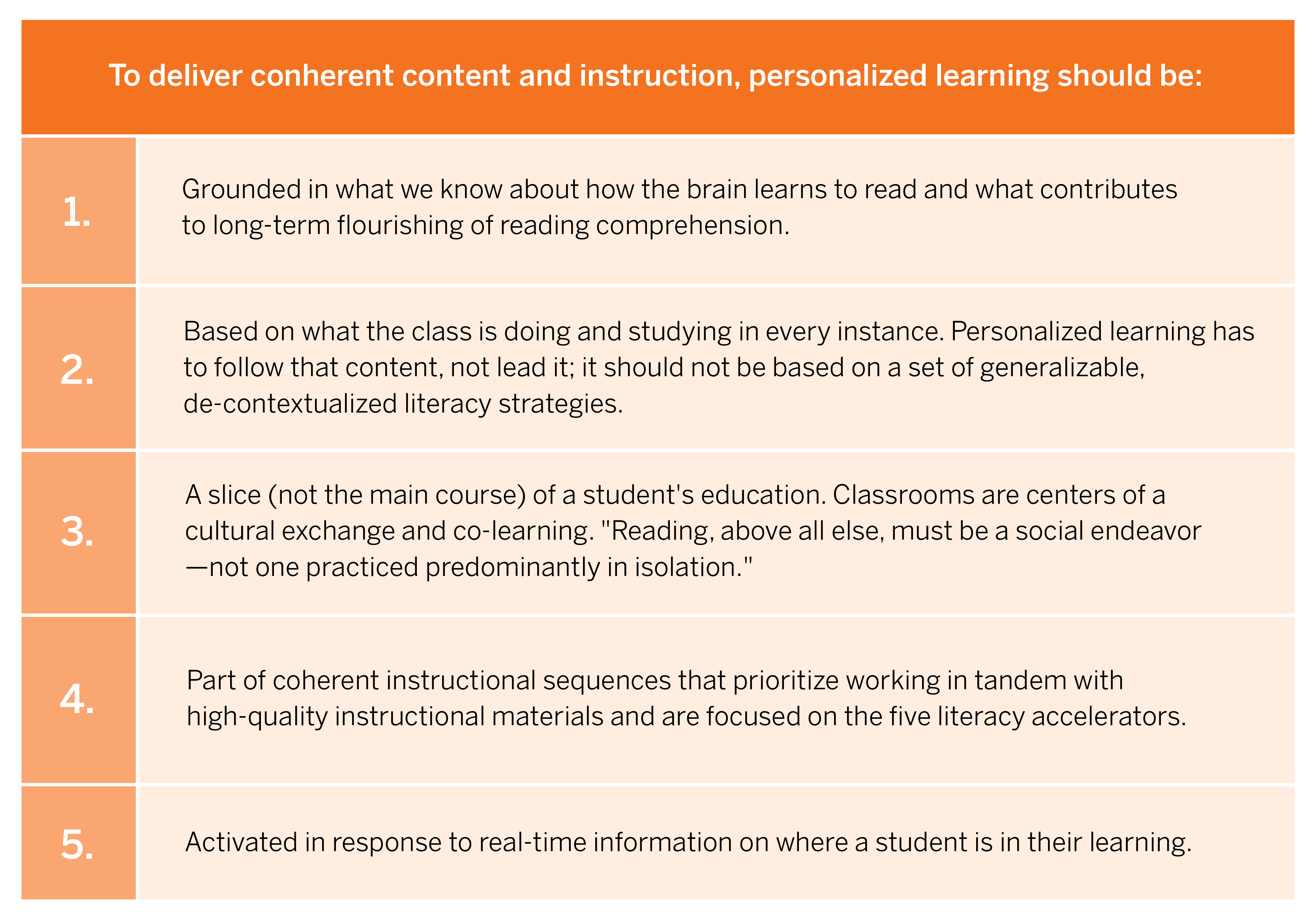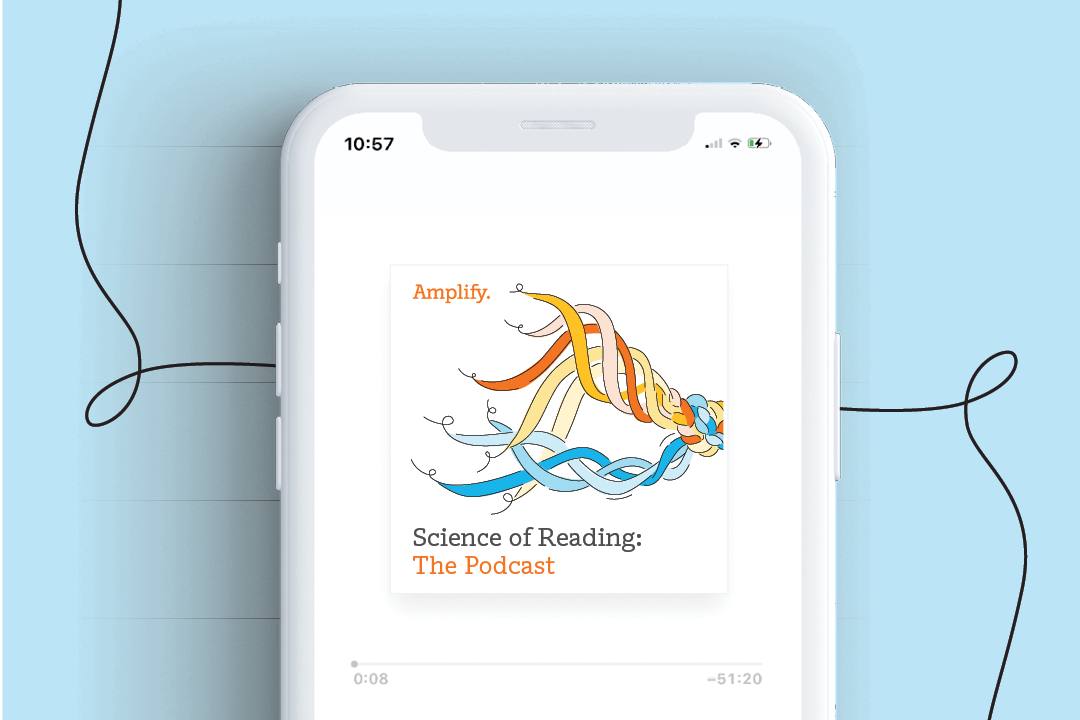
Surveying the landscape
Recent data shows that far fewer young ¼â½ÐÊÓƵapp are on target for reading proficiency than in previous years. In fall 2020, kindergarteners were 6 percent less likely to be on track in reading than they were in the 2019–20 school year.

How do we reverse these trends? A personalized learning program steeped in research-based literacy practices can be your first step. In this blog, we introduce personalized learning programs for early literacy, discuss why they should be aligned with the Science of Reading, and outline the key features that all effective personalized learning programs should have to support ALL ¼â½ÐÊÓƵapp.
What is personalized learning?
“Personalized learning in literacy education is an approach in which teaching and other learning experiences build on each student’s strengths, address each student’s needs, spur student motivation and agency, and help all ¼â½ÐÊÓƵapp meet grade-level standards and, ultimately, achieve college and career readiness.”
— Student Achievement Partners
outlines a set of key components every personalized program should include to accelerate literacy:

How can I bring the Science of Reading into personalized learning?
Not all personalized learning programs should be treated equally. ¼â½ÐÊÓƵapp should provide explicit, systematic foundational skills, continue to build background knowledge, and support core Science of Reading instruction. Focusing on the things we do while we’re reading that allow us to make sense of text — — is a key component of supporting beginning readers.
How will I know if a personalized learning program is based on research about how children learn to read?
We’ve provided a checklist of key features to look for when selecting a personalized learning program grounded in the Science of Reading.
1) Look for a program that complements your Science of Reading instructional practices.
The content of a personalized program should support your core Science of Reading instruction.
Look for research-based instruction aligned to Scarborough’s Reading Rope, a focus on comprehension processes and language structures in addition to foundational skills, and personalization that adapts based on student needs.
2) Look for a program that employs a whole-child approach.
A whole-child approach focuses on ¼â½ÐÊÓƵapp’ individual strengths and needs.
Look for targeting of skill practice at the just-right level in ALL areas, a focus on ¼â½ÐÊÓƵapp’ individual strengths as well as their needs, and more opportunities for success, all of which build student confidence.
3) Look for a program that uses an adaptive scope and sequence.
In an adaptive model, ¼â½ÐÊÓƵapp progress along a unique pathway through a learning map that adapts based on their performance.
Look for full adaptivity — where ¼â½ÐÊÓƵapp progress along a pathway that adapts on multiple dimensions, not just one. The program should offer data to place ¼â½ÐÊÓƵapp into personalized pathways and continue to analyze student performance data to determine the skills they practice and when.
4) Look for a program that acts as a digital tutor to save teachers time.
A program that aims to save you time provides ¼â½ÐÊÓƵapp with differentiated instruction and pathways when they’re really struggling.
Look for a program that provides scaffolding and differentiated pathways to ¼â½ÐÊÓƵapp when they’re struggling, and offers precursor and ancillary skill development and advancement opportunities before revisiting challenging content. ¼â½ÐÊÓƵapp should alert teachers with targeted resources to support ¼â½ÐÊÓƵapp and keep them moving.
5) Look for a program that motivates ¼â½ÐÊÓƵapp intrinsically.
¼â½ÐÊÓƵapp that focus on intrinsic motivation leverage a growth mindset theory to ensure that ¼â½ÐÊÓƵapp have fun while they learn.
Look for a program that rewards persistence as much as performance and ensures ¼â½ÐÊÓƵapp have fun while they learn.
Personalized learning supplemental tool: ¼â½ÐÊÓƵapp Reading
¼â½ÐÊÓƵapp Reading is a personalized learning program powered by the Science of Reading. The program blends compelling storytelling with research-based instructional practices to offer:
- Personalized instruction across 13 different critical skill areas that adapt to each student’s needs while building on their strengths.
- Explicit practice in comprehension processes, phonics, and vocabulary.
- Extra support and scaffolds for struggling readers and English learners.
- An immersive game-play design that motivates ¼â½ÐÊÓƵapp and makes learning to read fun.
To learn how this program can accelerate reading growth in your district, request a personalized walkthrough below.
Work cited
, 27 Oct. 2020

